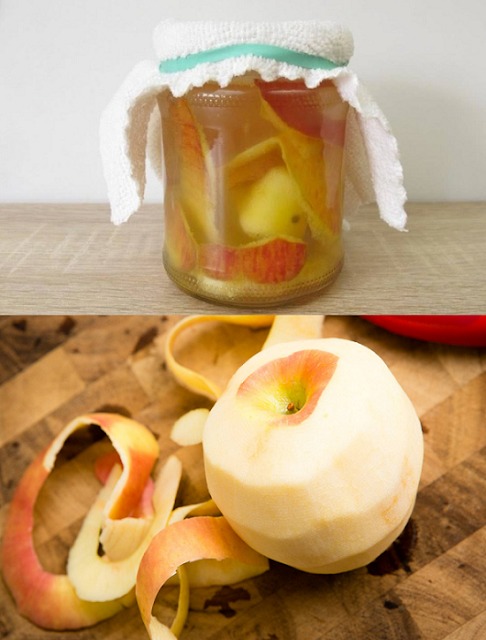The Hidden Value of Apple Peels
Reviving Apple Peels: A Simple Guide
Crafting Apple Cider Vinegar from Peels
Creating apple cider vinegar from peels is an uncomplicated process that yields a versatile and flavorful product. Here’s how to do it:
Thank you for reading this post, don't forget to subscribe!
Gather Your Ingredients: You’ll need a sterilized jar, a tablespoon of honey for every liter of water, water, and your collected apple peels or scraps.
Prepare the Jar: Place the apple peels in the sterilized jar, filling it more than halfway.
Mix Water and Honey: Combine lukewarm water with honey, then pour this mixture into the jar, ensuring all the peels are submerged.
Cover and Secure: Use a cloth to cover the jar’s opening, securing it with a rubber band.
Fermentation Process: Store the jar in a warm spot, ideally at a temperature around 20 degrees Celsius (68 degrees Fahrenheit), for about 4 weeks. It’s important to check on it weekly and gently remove any white patina that forms on the surface with a spoon.
After the fermentation period, your homemade apple cider vinegar is ready. For best preservation, transfer it to glass bottles and store in the refrigerator. This homemade vinegar is not only a testament to sustainable living but also a delightful addition to your culinary repertoire, perfect for various dressings and recipes.

